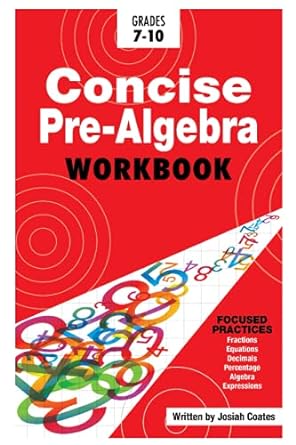Answered step by step
Verified Expert Solution
Question
1 Approved Answer
Tutorial Record Book Problems in Basic Probability and Binomial Distribution 1. A clinic offers you a free test for a very rare, but hideous disease.
Tutorial Record Book Problems in Basic Probability and Binomial Distribution 1. A clinic offers you a free test for a very rare, but hideous disease. The test they offer is very reliable. If you have the disease it has a 98% chance of giving a positive result, and if you don't have the disease, it has only a 1% chance of giving a positive result. You decide to take the test, and find that you test positive. What is the probability that you have the disease? 2. It may be assumed from experience that 1 in 1000 foetuses has the genetic disorder trisomy 21 ("Down's Syndrome"). A screening test carried out early in pregnancy classifies a foetus as either having trisomy 21 (a positive result) or not having trisomy 21 (a negative result). The test gives a positive result for 90% of foetuses that have trisomy 21 but also gives a positive result for 5% of foetuses that do not have trisomy 21. (a) What is the probability that of all foetuses have a positive test result for trisomy 21? (b) What is the probability that of foetuses that have a positive test result do not have trisomy 21? 3. In Georgetown, the weather on any day is dry with probability 2/3 and wet with probability 1/3 , the weather on different days being independent. (a) Find the probability that the next three days are dry. (b) Find the probability that exactly two of the next three days are wet. (c) A Georgetown resident walks his dog with probability 0.9 when it is dry but with probability 0.6 when it is wet. If it is known that he walked his dog last Monday, what is the probability that last Monday was dry in Georgetown? 4. A playing card is drawn from a pack. Let A be the event \"an Ace is drawn\" and let C be the event \"a Club is drawn\". Are the events A and C mutually exclusive? Are they independent? 5. A certain kind of lizard lays 8 eggs, each of which will hatch independently with probability 0.7. Let Y denote the number of eggs which hatch. (a) Find the probability atleast 2 eggs hatch. (b) tabulate and plot the probability mass function and cumulative distribution function as follows. 6. Clay pots made at a pottery are subject to three types of defect. It is found that 10% of pots show brittle fracture (B), 4% have cracked glazing (C) and 10% are discoloured (D). (a) Assuming that all three types of defect occur independently, what is the probability that a randomly chosen pot has no defects? (b) Experience has shown that the three types of defect do not all occur independently. 20% of pots with brittle fracture also have cracked glazing, but both of these defects occur independently of discoloration. (i) Find the probability that a pot has both brittle fracture and cracked glazing, and hence find the probability that a pot has either or both of these defects. (ii) What is now the probability that a randomly chosen pot has no defects? (iii) Suppose that a pot does not have cracked glazing and is not discoloured. Find the probability that it has brittle fracture. 7. Suppose in country X the chance that an infant lives to age 25 is 0.95, whereas the chance that he lives to age 65 is 0.65. For the latter, it is understood that to survive to age 65 means to survive both from birth to age 25 and from age 25 to 65. What is the chance that a person 25 years of age survives to age 65? 8. Assume that, when a child is born, the probability it is a girl is and that the sex of the child does not depend on the sex of an older sibling. (a) Find the probability distribution for the number of girls in a family with 4 children. (b) Find the mean and the standard deviation of this distribution. 9. Suppose that in a certain Malarious area past experience indicates that the probability of a person with a high fever will be positive for malaria is 0.7. Consider 3 randomly selected patients (with high fever) in that same area. (a) What is the probability that no patient will be positive for malaria? (b) What is the probability that exactly one patient will be positive for malaria? (c) What is the probability that exactly two of the patients will be positive for malaria? (d) What is the probability that all patients will be positive for malaria? (e) Find the mean and the SD of the probability distribution given above
Step by Step Solution
There are 3 Steps involved in it
Step: 1

Get Instant Access to Expert-Tailored Solutions
See step-by-step solutions with expert insights and AI powered tools for academic success
Step: 2

Step: 3

Ace Your Homework with AI
Get the answers you need in no time with our AI-driven, step-by-step assistance
Get Started


